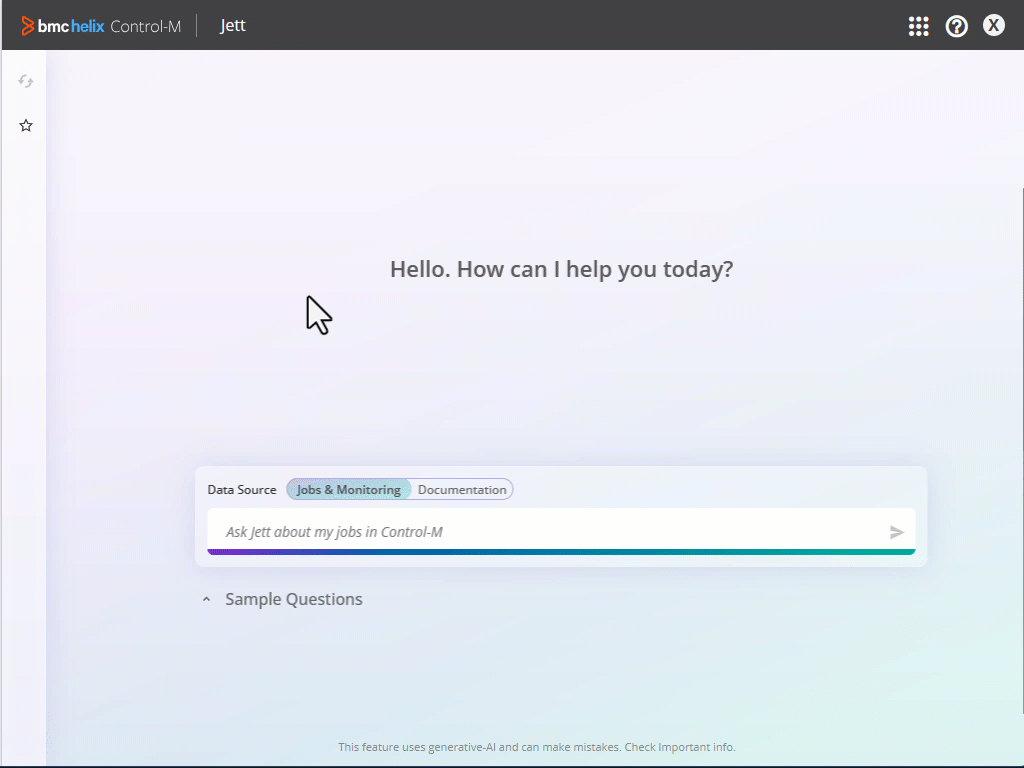Let us know how we can help
Sales & Pricing
Speak to a rep about your business needs
Help & Support
See our product support options
General inquiries and locations
Contact usUnlock the extraordinary potential of your orchestration framework to connect people, applications, and data to the business outcomes that matter most.
Control-M Data Assurance Highlights
Control-M Data Assurance augments workflow orchestration with embedded data validation.
Key Features
- Automated – Data validity checks run automatically within the workflow itself, providing clear visibility in a single view.
- Comprehensive – Data flows smoothly across platforms and applications with continuous observability.
- Accessible – Data assurance integrates directly into workflows without requiring data scientists or integration experts.
Key Benefits
- Prevent risk and reduce costs: Catch and stop bad data at any step to avoid cascading errors, wasted processing, SLA breaches, and business damage.
- Save time and simplify operations: Embed data validation checks within existing Control-M workflows, without requiring specialists to write scripts or create complex integrations.
- Deliver trusted outcomes: Ensure valid data and on-time results that build confidence in your processes and decisions.
Scale Extraordinary Results
Adapt and scale orchestration across the hybrid/multi-cloud enterprise
-
Enhanced, seamless SaaS transition
Transition to SaaS at your pace, with the flexibility to stay hybrid
-
Adaptable deployment and scalability focus
Enhance deployment on cloud & hybrid, and improve scalability
-
Key integrations for extraordinary results
Strengthen Control-M capabilities by integrating with your specialized tools such as, CyberArk for security, and Datadog, AppDynamics, and Dynatrace for APM

Simplify and Speed Operations with Jett
Empower teams with GenAI-driven automation that works right out of the box
-
Instant expertise at your fingertips
Jett, the GenAI-powered advisor for Control-M SaaS, answers your workflow-related questions in simple, natural language and provides intelligent documentation assistance
-
Simple language answers for all skill levels
It benefits users from IT Ops to business, beginners to experts, with answers anyone can understand
-
Dramatic acceleration of key scenarios
It enables faster issue resolution, easier audit verification, and optimization, while you learn as you work with instant, precise answers to your product questions
Integrate Data Everywhere
Connect your data ecosystem for seamless, real-time insights
Enhanced Managed file transfer
Continuously evolving MFT and MFTE – core to data ecosystem – in security & more
Enhanced control of MFTE access via user roles
New option for transferring files to/from Azure storage
Monthly delivery of new integrations
- Delivering 2-3 new integrations monthly – mostly data-related
Ongoing Application Integrator improvements
Supporting faster, higher-quality new integrations with new testing capabilities
Option for excluding parameters and hiding sensitive data in the job output
Collaborate with Agility
Enable faster collaboration with a unified orchestration framework
-
Access new capabilities with web UI
Advancing with web UI capabilities and a modern edge
-
Extraordinary web experience
Structured, thoughtful, customer-driven design
-
Unified View enhancements
Expand Unified View adoption for seamless control across self-hosted and SaaS environments
Solutions that fit your scale.
- SaaS deployment
- Available on AWS marketplace
- Full cloud and hybrid application and data orchestration (AWS, Azure, GCP, Snowflake, Databricks)
- SLA management and GenAI advisor service
- GitOps/DevOps CI/CD Integration
- 24x7 support
- Automatic upgrades and new feature access
- Includes high availability and disaster recovery out of the box
- SaaS, self-hosted, or hybrid deployment
- End-to-end visualization from mainframe to hybrid and multi-cloud
- Customizable usage models and contract options
- Industry-leading enterprise-class orchestration platform
- Available on AWS and Google Cloud Platform marketplaces
- Follow the sun global support, dedicated Customer Success Manager available
- Professional conversion services available
Resources
Demo
Data Assurance
Discover how Control-M's Data Assurance can seamlessly integrate data quality checkpoints into your pipelines, catching error before they impact your business.